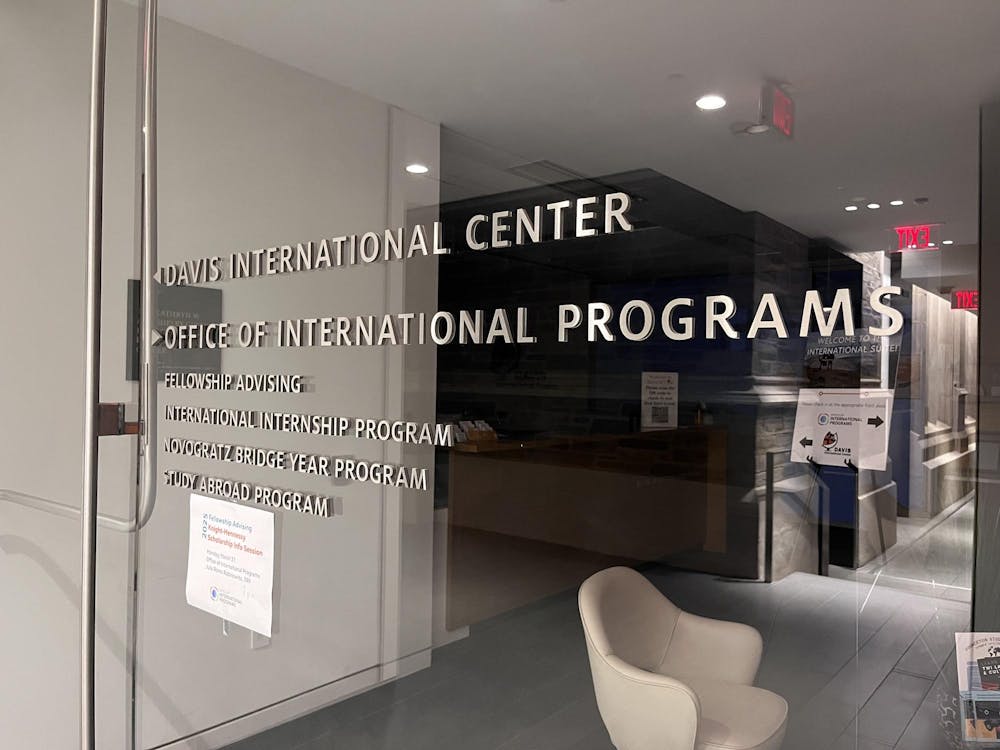While ReCAP offers safe storage for millions of volumes that the on-campus libraries cannot accommodate, several professors said that the facility, which is not open for browsing by students or faculty, prevents the immediate and direct access to research materials provided by a traditional library.
ReCAP executive director Eileen Henthorne, who worked in Firestone Library for 10 years before moving to ReCAP, said the opening of the facility was initially controversial for some faculty members. “When ReCAP first came about, there was a huge hurdle of introducing it to faculty and staff,” she said. “There were a lot of people uncomfortable … with moving books off campus and out of sight.” To remedy this problem, ReCAP staff offered tours to faculty members when the facility opened, and those who had seen the facility and how it functioned were assured that the books were “safe and sound,” she said, adding that ReCAP plans to expand to 12 modules housing 30 to 35 million items by 2030.
Princeton decided to build the facility in 1999 because the on-campus libraries were running out of space to house their rapidly growing collections. “Every research library needs to manage space,” Associate University Librarian for Collection Development David Magier said. “When major research libraries like ours were built, nobody envisioned the time when they would be completely filled. When shelving becomes too crowded, [holdings] are not accessible to patrons.”
Using the University’s online catalog, faculty and students can request specific books currently housed at ReCAP, which will then be delivered to an on-campus library within two business days.
History professor Anthony Grafton, who often uses ReCAP, said he views the facility as an “inevitable” response to the University’s growing need for space. “It’s happening at every major university library,” Grafton said. “Basically, we are obtaining more than a mile of books a year at Princeton University despite what people tell you about the rise of electronic media. Books come in like a pile driver.”
Grafton said there was also a tradeoff in maintaining the collection at the off-campus closed facility. “We lose the older perspective on scholarship,” Grafton said. “The stacks, in a good library, reproduce the scholarly debate on a big question. In the humanities and social sciences, you can trace the development of the question.” ReCAP organizes books into groups of similar size and then stores them into tightly packed shelves, thus removing wasted space, Magier explained. This method, however, makes ReCAP “nonbrowsable” by faculty and students, he added.
Art and archaeology professor Esther da Costa Meyer expressed a similar sentiment, saying she sees some drawbacks to using ReCAP but ultimately believes it’s worth the costs. “If that is the price we have to pay to have access to all our books, it’s a small price to pay,” she said. “But humanists need stacks — when you find a book in a stack, you also find a number of other unexpected things.”
“Going to the stacks is a quest: You never know what you will find near the books you are looking for. It’s a treasure hunt in which you are creatively diverted from your single-minded pursuit. It’s the serendipity of it all that enriches research,” she added.

Henthorne said ReCAP is more efficient and secure than a traditional library. “When you go to the stacks, books are checked out or missing off the shelf,” Henthorne explained. “[But in ReCAP], if you want the item, it’s here.” Henthorne said ReCAP uses a computer system to log barcodes for each book and numbers for each tray, shelf and aisle in each module. ReCAP has never lost an item, and staff can find volumes “within seconds based on any one of those barcodes.” This makes ReCAP’s system “more secure than call-numbers,” Henthorne said.
Henthorne added that though the facility does not currently have the space or legal rights to pursue digitization of its collection, many patrons are already requesting electronic scans instead of actual texts through ReCAP’s Electronic Document Delivery system. In the fall, ReCAP will send a significant portion of its collection to Google Books for digitization, she added.
Anthropology professor Graham Jones said he thinks ReCAP is part of a “historical transition” to digitization of texts because of the loss of “direct access to print materials” that traditional libraries offer. “Research tools are becoming more efficient, and something could be lost to that efficiency,” Jones said, adding, “Browsing is becoming digitized.”








